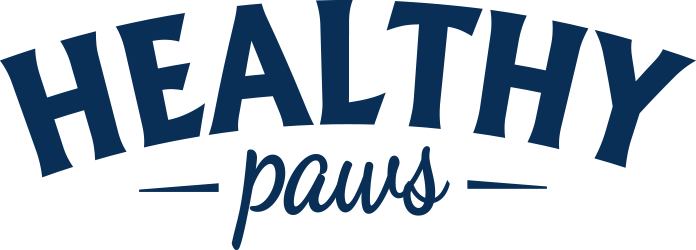Blog
Bringing your new puppy home
The breeder will usually give you enough food for a couple of meals. If you’re going to change from something else to Healthy Paws, we recommend that you do an immediate swap after those first couple of meals. If your puppy experiences a runny tummy when it first gets to you, that’s usually due to the stress of moving home. Follow the feeding guide on the back of the pack and however distasteful it may sound, keep an eye on its stools. If the first couple of stools are hard, then there’s a soft runny one at the end, it denotes that you’re feeding too much food, so reduce the amount you’re feeding slightly.
Puppy food recipes are developed based on bone growth. The important thing about puppy food is the phosphorus/calcium ratio. Phosphorus absorbs calcium and this mix is used for brain growth and eye function, what’s left is then used for bone growth. For a balanced puppy diet there should be one part phosphorus to 1.2 parts calcium.
The ingredients in Healthy Paws puppy food are designed to support and maintain healthy hips and joints for growing puppies. The use of British turkey meat and the mix of oils and minerals in this food is rich in DHA supporting brain and eye function too. Our hypoallergenic recipes are ideal for your puppy’s sensitive tummy. Naturally high in vitamin C and anti oxidants, its vegetables, herbs and fruits support the immune system and the single source of protein makes it highly digestible and extremely tasty. Normally you should feed your puppy four times a day up to 12 weeks and then cut it to three times a day, by 16 weeks it should be twice a day. A dog should need about two poos a day, the rule is that the smaller the poo, the better it is because the goodness of the food has been absorbed into the body.
Puppies move onto adult food at different rates depending on the breed, but as a guide a Jack Russell would be ready to move onto adult food at 8 months, a Great Dane at 14 months. Giant breeds don’t really have a ‘junior’ period, two years down the line they’re ready for senior food. Essentially, you stop feeding puppy food when the dog’s height has been achieved and it starts to put on weight.
It’s important to remember that puppies are supposed to go through a ‘gangly’ period, so don’t think that you need to feed them more food, it’s part of the natural process, think about human teenagers, they go through the same stage! Sometimes owners feel embarrassed that their puppy looks gangly, especially Labradors – it’s just that their bones have to develop before they can take their final body weight.
Whatever you do, don’t think you should add some chicken breast or steak to their meals; meat is full of phosphorus which absorbs the calcium, too much of it robs the goodness that should be going to their bones and you will be storing up problems with metabolic bone disease later in life. If you do feed extra meat, then you need to add extra calcium too, for example some of the Healthy Paws wet food. If a puppy needs to put weight on, then little and often is the rule than more at one sitting.
Helpful hints if you’re about to get a new puppy
Most puppies start to leave the bitch from 8 weeks old for their new home and for a successful transition, we recommend that you drop off a scarf, or a pillow or something similar with the bitch for a few days beforehand so that the puppy has something to take with it to its new home that still smells of its Mum.
Puppies always cry on their first night in a new home, as long as you’re giving them a good diet so they don’t have tummy cramps, they will soon settle down and start to feel safe and sound.
A puppy crate can be a good thing if used correctly – the crate should be seen as a reward and a calm place, but remember that it’s the dog’s den, not your children’s! Keep the children out of it so that the dog always feels secure in it, feed and keep toys in the crate and put a blanket over it to make it more like a den; it’s a special space for your puppy.



